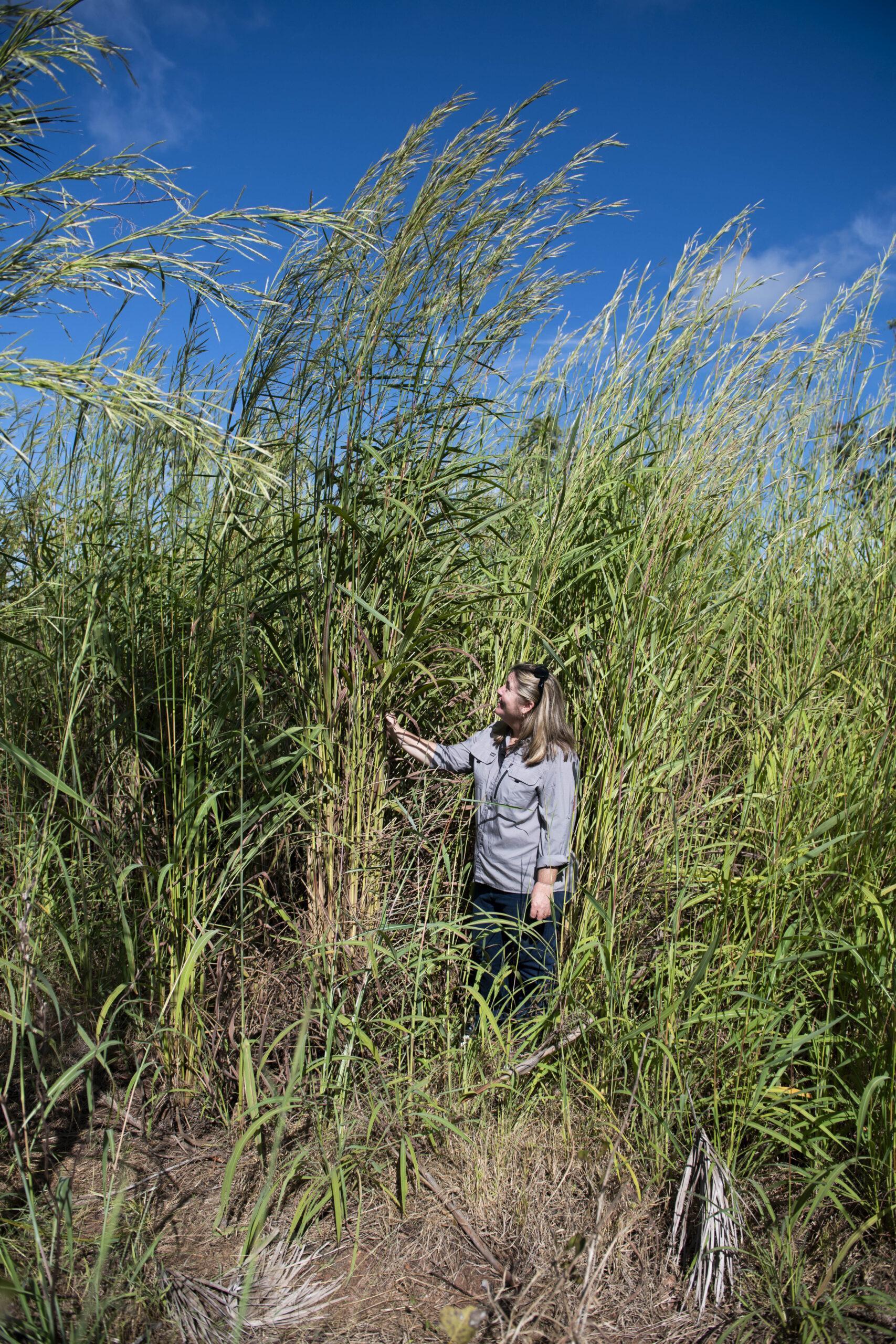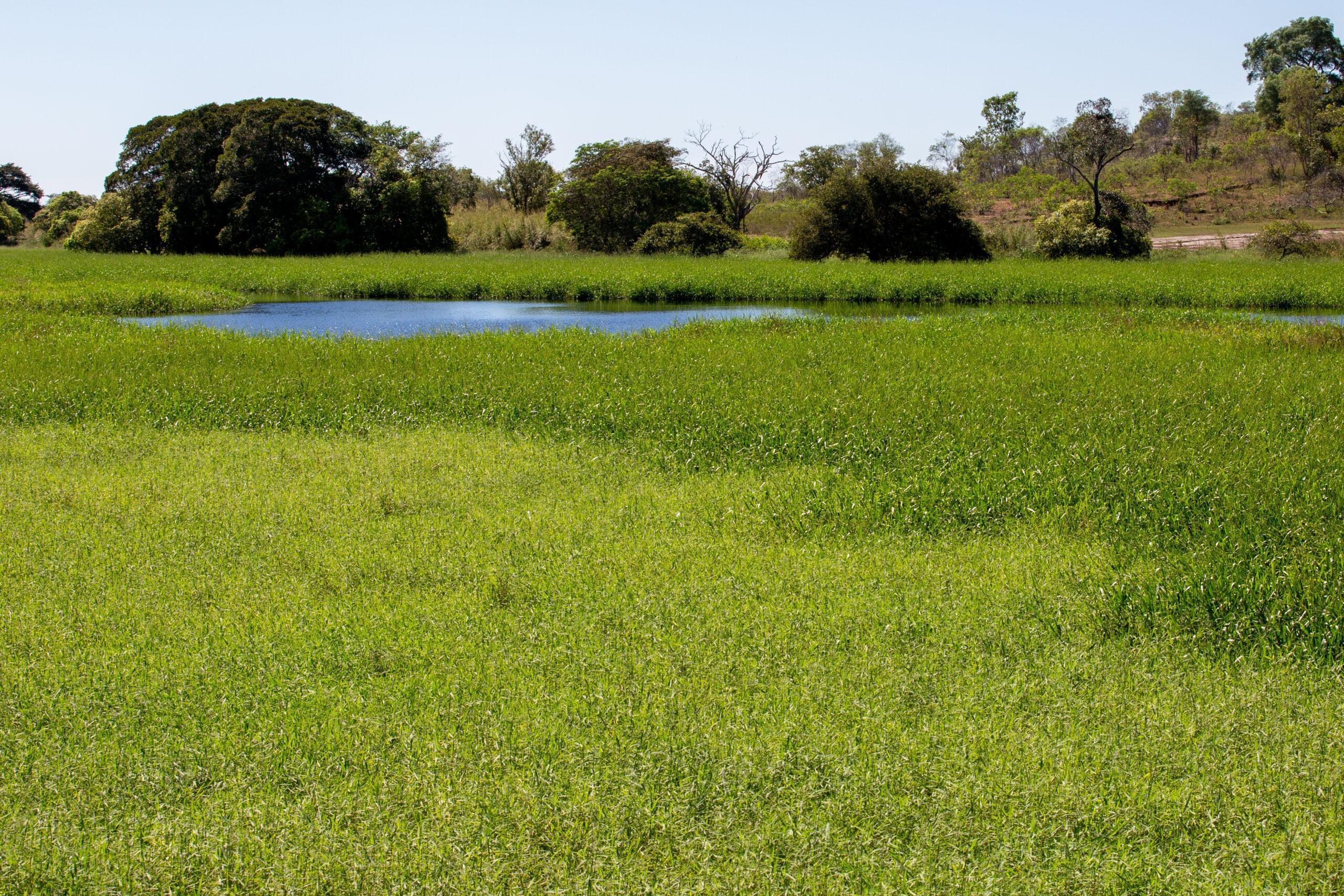Keywords: invasive grasses, invasive grass Australia, gamba grass, olive hymenachne, para grass, Kakadu, Kakadu National Park, Litchfield National Park
Project start date: 01/03/2023
Project end date: 31/12/2026
NESP funding: $1,100,500 (GST-exclusive)
Invasive grasses are a major risk to biodiversity across northern Australia. High-impact invasive grasses are already established across the region and pose a significant management challenge in protected areas.
This project aims to support the strategic management of invasive grasses in northern Australia – in particular, gamba grass, para grass and olive hymenachne – to reduce their impacts on biodiversity.
Download the National Best Practice Manual for Gamba Grass (Andropogon gayanus)

Natalie Rossiter-Rachor standing amongst tall gamba grass. Photo: Resilient Landscapes Hub.
This project will provide support to managers of protected areas and Indigenous ranger groups through co-development of user-friendly mapping, monitoring and decision-support tools.
The 3 key species of invasive grass are listed in the Australian Government’s Threatened species action plan 2022–2032 (TSAP) and the 2012 Threat abatement plan to reduce the impacts on northern Australia’s biodiversity by the 5 listed grasses (TAP). The project is collaborating with research users to address Target 10 of the TSAP that, by 2027, ‘Gamba grass is reduced to an area less than its 2022 range’, and all 6 objectives of the TAP.
Key research areas
To address these challenges and support Indigenous rangers and other land managers in best-practice management of invasive grasses, this project is:

Para grass (front left) and olive hymenachne (back right) in a Northern Territory wetland. Photo: Michael Douglas.
Project leaders
The project is being led by Dr Natalie Rossiter-Rachor from Charles Darwin University and Professor Samantha Setterfield from The University of Western Australia. This project will contribute to 2 cross-cutting initiatives:
Contact
For further information, contact natalie.rossiter@cdu.edu.au, samantha.setterfield@uwa.edu.au or nesplandscapes@uwa.edu.au.
Research users
People